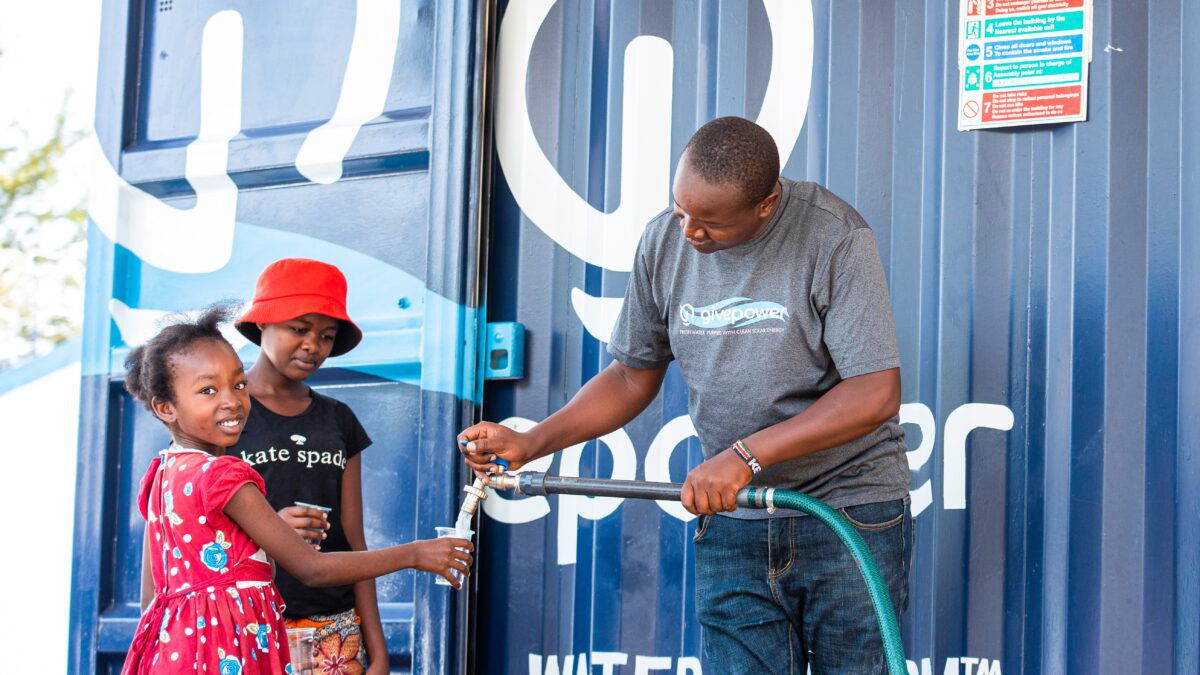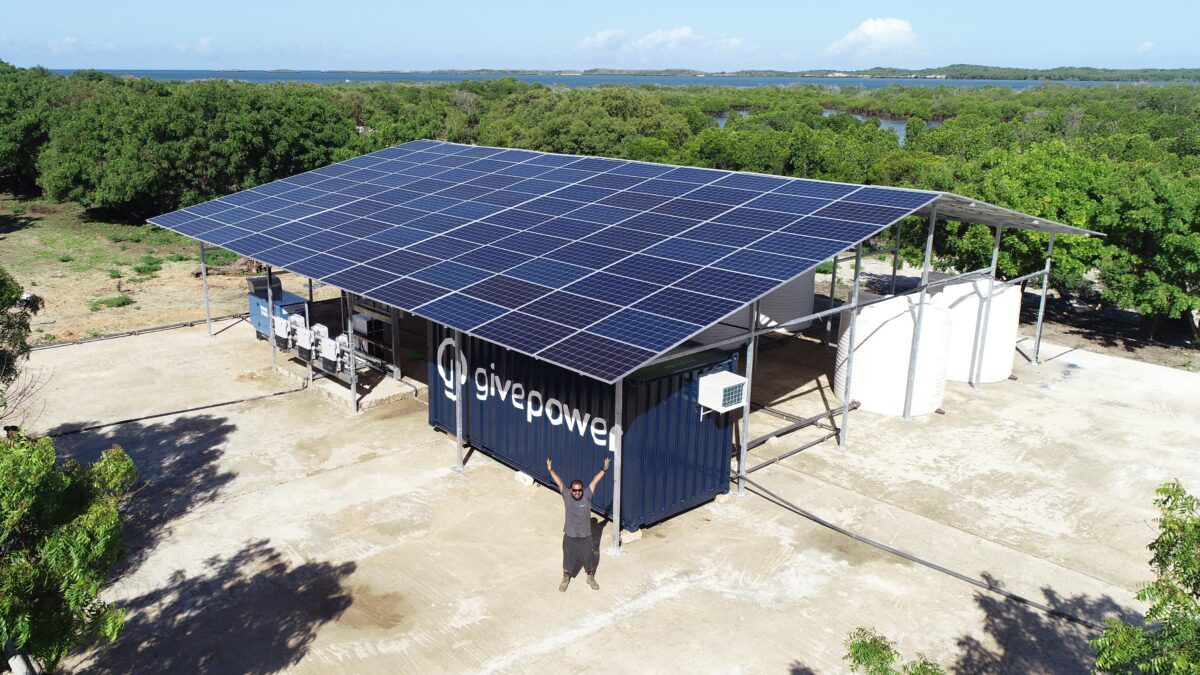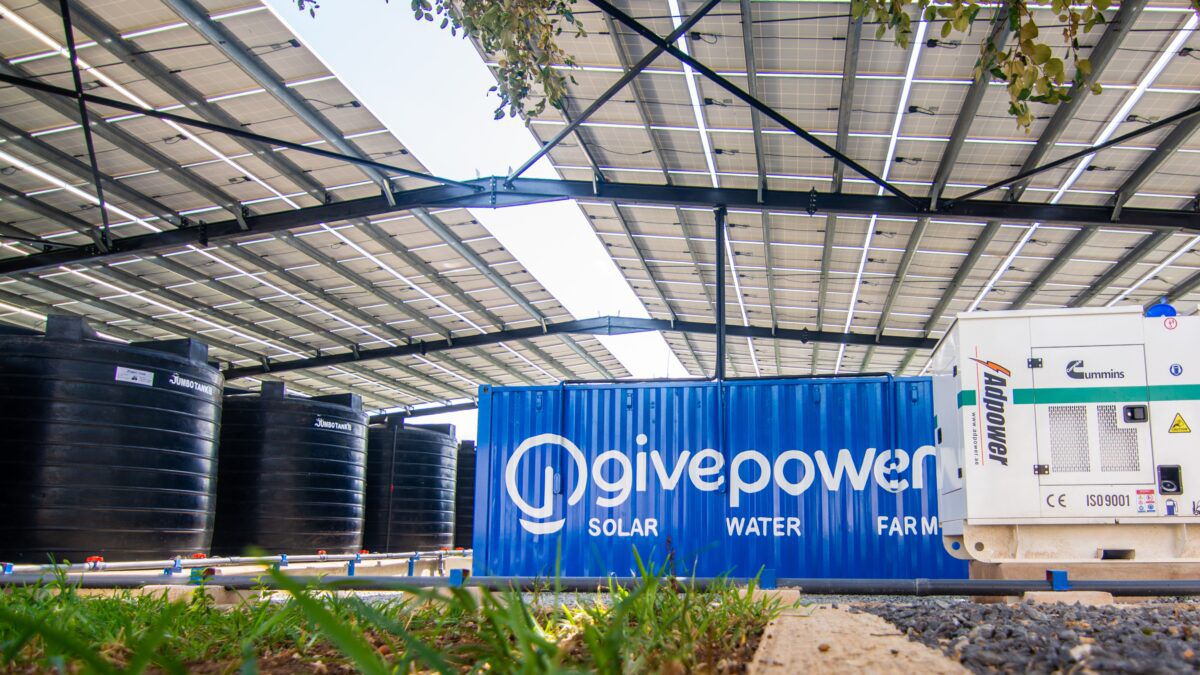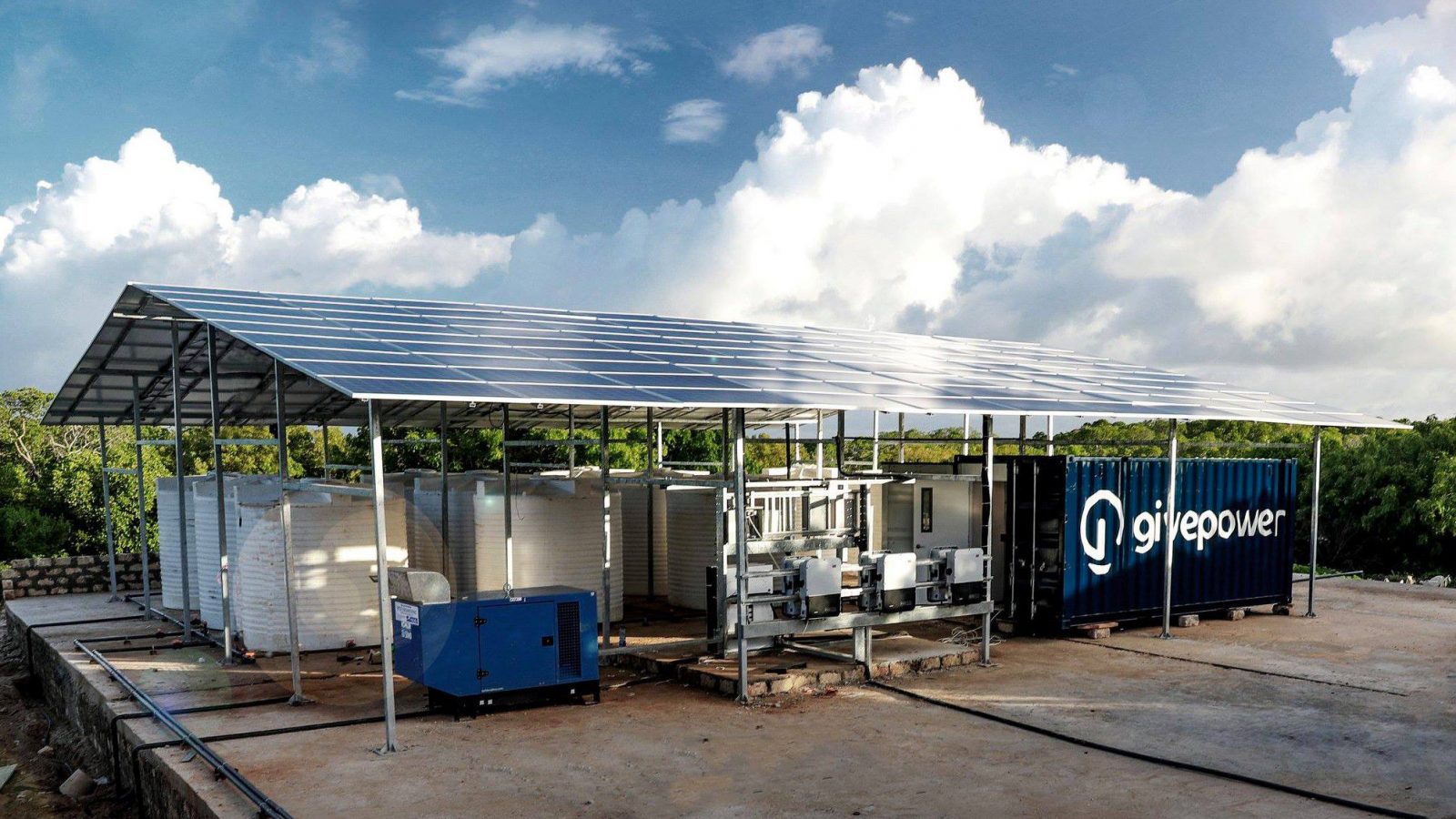GivePower builds and delivers containerized solar-powered water farms that desalinate salty water. The organization focuses on areas where “there’s an immediate and growing need for better access to safe water,” Kyle Stephan, vice president of operations at GivePower, told .
While some people have no reliable water sources near them, others rely on contaminated or brackish water to drink, clean and cook with. Brackish water is saltier than fresh water but not quite as salty as seawater.
 (Photo: GivePower)
(Photo: GivePower)
“I think there’s a lot of really exciting things we can do in all of those places to help move the needle around access to clean drinking water,” Stephan said.
Containerized solar water farms
 Solar Water Farm Max (Photo: GivePower)
Solar Water Farm Max (Photo: GivePower)
The organization has solar water farms that can produce 4,000 gallons of water or 1,600 gallons of water each day, depending on the needs of the area. Some of these models have solar panels that fan out on top of the shipping container.
GivePower had to choose a structure that would withstand harsh conditions such as hurricanes and earthquakes that these areas commonly experience. Shipping containers are “really well suited to that,” Stephan said.
GivePower typically buys shipping containers that have been used once to transport imported goods from China. The water filtration system is then installed and tested in an off-grid setting in Texas before they are shipped out to their destinations.
“They were ecologically friendly in that they had already been produced. This was an existing thing that we didn’t have to build from scratch,” Stephan said.
Local economy impacts
 (Photo: GivePower)
(Photo: GivePower)
Because these systems are complicated, they require regular maintenance and care to remain operational. GivePower employs locals in roles for management and site-level staff to do all of the maintenance, operations, water sales, distribution, human resources and accounting. In Kenya, GivePower has more than 40 employees, including four technicians.
“What really makes this unique is we took a longer-term view of these projects and said it’s not good enough that we just provide this equipment into these communities and then kind of cut the ribbon,” Stephan said.
GivePower sells its water at or below the cost of untreated water in the area. That revenue stream is used to pay employees onsite.
“They have a really dramatic effect on the communities that we operate in,” Stephan said. Communities have seen marked declines in waterborne diseases such as typhoid and cholera.
It’s hard to quantify all of the impacts that having reliable access to affordable, clean water can have on communities. People are more likely to go to school and pursue other occupations when they don’t have to spend hours a day fetching water that may not be safe to drink.
Water pipe networks are rare in many remote parts of the world. GivePower sometimes hires security and delivery truck drivers to distribute water to the community.
 (Photo: GivePower)
(Photo: GivePower)
“We also see a lot of third-party distribution,” Stephan said. Many of the locals who sell or distribute water already had a transportation business with tuk-tuks, motorcycles or trucks. They buy water directly from GivePower and then sell it to people in the area.
A water kiosk owner in Likoni, Kenya — one of GivePower’s locations — said, “Life is different now, and we have our own money.”
Choosing optimal locations
Several of the locations GivePower chooses are in coastal areas where there is plenty of water, but it’s not safe for drinking. In islands or coastal communities, GivePower draws in and purifies water directly from the ocean.
There are some places where drilling a well and using chlorine or filtration will provide a clean water source. GivePower is focused on “those more challenging water sources [such as] seawater, brackish water, what’s called nontraditional water sources,” Stephan said.
“We’ve had some interesting applications where the communities are far too remote and cranes aren’t available. I’ve seen some really impressive videos of people getting these things up onto logs and sort of rolling them across these logs using just manpower — just a bunch of people pushing them into place. It’s pretty impressive the ingenuity that some of the local communities, especially in the remote areas, will come up with to get them in the right place,” Stephan said.
 (Photo: GivePower)
(Photo: GivePower)
The smaller systems have an integrated solar panel rack that mounts on top of the container that takes less than two hours to set up. The larger systems use a crane to set up columns and the main structure before teams use scaffolding to hang the solar panels that shade the container system and water tanks below.
Likoni location
Likoni is a low-income community of about 200,000 people on the southeast coast of Kenya, bordering the Indian Ocean. On the outskirts of Mombasa, Likoni experiences extreme water scarcity and relies on imported water.
People in Likonia may pay twice the amount they pay for rent to get enough water for the month.
(Video: GivePower)
“Having clean water has made such a big impact [on] this community. Think about the father who now does not have to continuously take his children to the hospital because of typhoid or cholera or the mom who has a small eatery and now knows that her food will be delicious,” Ndung’u said.
Dealing with global supply chain issues
The shortage and steady rise in cost for shipping containers have impacted GivePower, especially since it relies on donations to deploy new solar water farms.
“The global supply chain right now is proving to be rather challenging,” Stephan said. Tariffs, local regulations and taxes can impact the cost and timeline for desalination projects. There are also certain parts that are hard to get right now, such as pumps and chips. Items that used to take three months to get are now taking six months or longer.
Luckily, solar panels haven’t been as difficult to obtain since GivePower typically sources them from local suppliers in the country where it sets up desalination plants.
Haitians helping Haitians
The organization rallied with partners to launch a large-scale relief effort, delivering tens of thousands of gallons of water a day from the island to the mainland to affected communities.
Haiti heavily relies on foreign aid, so it was unique to see Haitians working for GivePower help other Haitians in this crisis, Stephan said.






